Black And Decker RO600 Handleiding
Bekijk gratis de handleiding van Black And Decker RO600 (5 pagina’s), behorend tot de categorie Schuurmachine. Deze gids werd als nuttig beoordeeld door 43 mensen en kreeg gemiddeld 4.4 sterren uit 22 reviews. Heb je een vraag over Black And Decker RO600 of wil je andere gebruikers van dit product iets vragen? Stel een vraag
Pagina 1/5

GENERAL SAFETY RULES
WARNING! Read and understand all instructions. Failure to follow all instructions listed
below may result in electric shock, fire and/or serious personal injury.
SAVE THESE INSTRUCTIONS
Work Area
• Keep your work area clean and well lit. Cluttered benches and dark areas invite accidents.
•Do not operate power tools in explosive atmospheres, such as in the presence of
flammable liquids, gases, or dust. Power tools create sparks which may ignite the dust or
fumes.
•Keep bystanders, children, and visitors away while operating a power tool.
Distractions can cause you to lose control.
Electrical Safety
• Grounded tools must be plugged into an outlet properly installed and grounded in
accordance with all codes and ordinances. Never remove the grounding prong or
modify the plug in any way. Do not use any adaptor plugs. Check with a qualified
electrician if you are in doubt as to whether the outlet is properly grounded. If the tools
should electrically malfunction or break down, grounding provides a low resistance path to
carry electricity away from the user. Applicable only to Class I (Grounded) tools.
• Double insulated tools are equipped with a polarized plug (one blade is wider than the
other.) This plug will fit in a polarized outlet only one way. If the plug does not fit fully
in the outlet, reverse the plug. If it still does not fit, contact a qualified electrician to
install a polarized outlet. Do not change the plug in any way. Double Insulation
eliminates the need for the three wire grounded power cord and grounded power supply
system. Applicable only to Class ll tools.
•Avoid body contact with grounded surfaces such as pipes, radiators, ranges and
refrigerators. There is an increased risk of electric shock if your body is grounded.
•Don’t expose power tools to rain or wet conditions. Water entering a power tool will
increase the risk of electric shock.
•Do not abuse the cord. Never use the cord to carry the tools or pull the plug from an
outlet. Keep cord away from heat, oil, sharp edges or moving parts. Replace damaged
cords immediately. Damaged cords increase the risk of electric shock.
•When operating a power tool outside, use an outdoor extension cord marked “W-A”
or “W.” These cords are rated for outdoor use and reduce the risk of electric shock.
Personal Safety
• Stay alert, watch what you are doing and use common sense when operating a power
tool. Do not use tool while tired or under the influence of drugs, alcohol, or
medication. A moment of inattention while operating power tools may result in serious
personal injury,
•Dress properly. Do not wear loose clothing or jewelry. Contain long hair. Keep your
hair, clothing, and gloves away from moving parts. Loose clothes, jewelry, or long hair
can be caught in moving parts. Air vents cover moving parts and should be avoided.
•Avoid accidental starting. Be sure switch is off before plugging in. Carrying tools with
your finger on the switch or plugging in tools that have the switch on invites accidents.
•Remove adjusting keys or wrenches before turning the tool on. A wrench or a key that is
left attached to a rotating part of the tool may result in personal injury.
•Do not overreach. Keep proper footing and balance at all times. Proper footing and
balance enables better control of the tool in unexpected situations.
•Use safety equipment. Always wear eye protection. Dust mask, non-skid safety shoes,
hard hat, or hearing protection must be used for appropriate conditions.
Tool Use and Care
• Use clamps or other practical way to secure and support the workpiece to a stable
platform. Holding the work by hand or against your body is unstable and may lead to loss of
control.
•Do not force tool. Use the correct tool for your application. The correct tool will do the
job better and safer at the rate for which it is designed.
•Do not use tool if switch does not turn it on or off. Any tool that cannot be controlled with
the switch is dangerous and must be repaired.
•Disconnect the plug from the power source before making any adjustments,
changing accessories, or storing the tool. Such preventive safety measures reduce the
risk of starting the tool accidentally.
•Store idle tools out of reach of children and other untrained persons. Tools are
dangerous in the hands of untrained users.
•Maintain tools with care. Keep cutting tools sharp and clean. Properly maintained tools,
with sharp cutting edges are less likely to bind and are easier to control.
•Check for misalignment or binding of moving parts, breakage of parts, and any other
condition that may affect the tools operation. If damaged, have the tool serviced
before using. Many accidents are caused by poorly maintained tools.
•Use only accessories that are recommended by the manufacturer for your model.
Accessories that may be suitable for one tool, may become hazardous when used on
another tool.
Service
• Tool service must be performed only by qualified repair personnel. Service or
maintenance performed by unqualified personnel could result in a risk of injury.
•When servicing a tool, use only identical replacement parts. Follow instructions in the
Maintenance section of this manual. Use of unauthorized parts or failure to follow
Maintenance Instructions may create a risk of electric shock or injury.
WARNING: Some dust created by power sanding, sawing, grinding, drilling, and other
construction activities contains chemicals known to cause cancer, birth defects or other
reproductive harm. Some examples of these chemicals are:
• lead from lead-based paints,
• crystalline silica from bricks and cement and other masonry products, and
• arsenic and chromium from chemically-treated lumber. (CCA)
Your risk from these exposures varies, depending on how often you do this type of work. To
reduce your exposure to these chemicals: work in a well ventilated area, and work with
approved safety equipment, such as those dust masks that are specially designed to filter
out microscopic particles.
The label on your tool may include the following symbols.
V ..........................volts A..........................amperes
Hz ........................hertz W ........................watts
min ........................minutes ......................alternating current
......................direct current no ........................no load speed
..........................Class II Construction ........................earthing terminal
........................safety alert symbol .../min ..................revolutions or
reciprocations
per minute
VEA EL ESPAÑOL EN LA CONTRAPORTADA.
SAVE THIS MANUAL FOR FUTURE REFERENCE.
INSTRUCTIVO DE OPERACIÓN, CENTROS DE SERVICIO Y PÓLIZA
DE GARANTÍA. LÉASE ESTE INSTRUCTIVO ANTESADVERTENCIA:
DE USAR EL PRODUCTO.
CAT. NO. RO600 FORM NO. 375886-00 (AUG-01) COPYRIGHT 2001 PRINTED IN ENGLAND
KEY INFORMATION YOU SHOULD KNOW:
• Regularly check wear on paper and replace worn paper.
• The black pads are not abrasive surfaces–do not use this tool without properly
attaching sandpaper to the pad.
• When changing pads, ensure the posts of the detail/finishing pad are installed
properly before tightening the bolt (Fig. 3).
INSTRUCTION MANUAL
1-800-54-HOW-TO
1-800-54-HOW-TO
1-800-54-HOW-TO
1-800-54-HOW-TO1-800-54-HOW-TO
BEFORE RETURNING THIS PRODUCT
BEFORE RETURNING THIS PRODUCT
BEFORE RETURNING THIS PRODUCT
BEFORE RETURNING THIS PRODUCT BEFORE RETURNING THIS PRODUCT
FOR ANY REASON PLEASE CALL
FOR ANY REASON PLEASE CALL
FOR ANY REASON PLEASE CALL
FOR ANY REASON PLEASE CALLFOR ANY REASON PLEASE CALL
IF YOU SHOULD EXPERIENCE A PROBLEM
WITH YOUR PURCHASE,BLACK & DECKER
CALL .1-800-54-HOW-TO (1-800-544-6986)
IN MOST CASES, A REPRESENTATIVEBLACK & DECKER
CAN RESOLVE YOUR PROBLEM OVER THE PHONE.
IF YOU HAVE A SUGGESTION OR COMMENT,
GIVE US A CALL. YOUR FEEDBACK IS VITAL
TO THE SUCCESS OF BLACK & DECKER S QUALITY ’
IMPROVEMENT PROGRAM.
(544-6986)
Catalog No.
RO600
1
Detail sanding tip
Pointe de ponçage de détail
Punta para lijado de detalles
Platen
Plaque
Placa
Rotate tip completely (180°)
Faire tourner la pointe
complètement (180°)
Gire la punta completamente (180°)
Screw
Vis
Tornillo
2
3
Posts
Tiges
Postes
Bolt
Boulon
Tornillo
Washer
Rondelle
Roldana
4
Bolt
Boulon
Tornillo
Washer
Rondelle
Roldana
Sanding pad
Tampon de ponçage
Base de lijado
5Random orbit sanding pad
Tampon de ponçage orbital excentrique
Base de lijado de órbita
Channel
Voie
Canal
6
Detail sanding tips
Pointes de ponçage de détail
Puntas de lijada a detalle
7
Hex wrench storage
Clé hexagonale
llave allen
8
910
Interior baffle
Chicane intérieure
Baffle interior

RENSEIGNEMENTS IMPORTANTS
• é é è éV rifier r guli rement l’état du papier et remplacer le papier us .
•Les tampons noirs ne constituent pas une surface abrasive; ne pas se servir de
l .’outil sans fixer au tampon le papier abrasif approprié
• ’ éLors du remplacement des tampons, s assurer que les tiges du tampon de d tail
ou de finition sont bien install es avant de serrer le boulon (fig. 3).é
CONSERVER LE PRÉSENT GUIDE TITRE DE RÀ É ÉF RENCE.
Mesures de sécurité
AVERTISSEMENT! Lire et comprendre toutes les directives. Le non-respect de toutes
les directives suivantes pr sente des risques de secousses lectriques, d incendie ou deé é ’
blessures graves.
CONSERVER CES MESURES.
ZONE DE TRAVAIL
• é éS'assurer que la zone de travail est propre et bien é éclair e. Des tablis encombr s et
des endroits sombres pr sentent des risques d'accidents.é
•Ne pas utiliser des outils é électriques en pr sence de vapeurs explosives (comme
celles d es par des liquides, des gaz ou des poussi res inflammables).égagé è Les
é é é étincelles g n r es par le moteur des outils lectriques peuvent enflammer les poussié ères
ou les vapeurs.
• É loigner les curieux, les enfants et les visiteurs de la zone de travail lorsqu'on utilise
un outil électrique. Une distraction peut entra ner la perte de ma trise de l'outil.î î
MESURES DE SÉCURITÉ RELATIVES À L'ÉLECTRICITÉ
•Les outils à é double isolation comportent une fiche polaris e (une lame plus large que
l'autre). La fiche n'entre que d'une fa on dans une prise polaris e. Lorsque la ficheç é
n'entre pas s avoir inversà fond dans la prise, essayer de nouveau aprè é les broches
de la fiche. Si la fiche n'entre toujours pas dans la prise, communiquer avec un
é é électricien certifi afin de faire installer une prise polaris e. Ne modifier en aucune
façon la fiche. La double isolation élimine le besoin d'un cordon trifilaire mis à la terre et
d'un syst me d'alimentation mis la terre.è à
• Éviter de toucher des surfaces mises la terre comme des tuyaux, des radiateurs,à à
des cuisini res et des rè éfrig rateurs.éLes risques de secousses électriques sont plus
é é àlev s si le corps de l'utilisateur est mis la terre.
• é é éProt ger les outils lectriques de la pluie ou des conditions mouill es. Une infiltration
d'eau dans l'outil augmente les risques de secousses électriques.
•Manipuler le cordon avec soin. Ne jamais se servir du cordon afin de transporter
l'outil ni tirer sur le cordon pour d brancher l'outil. loigner le cordon des sources deé É
chaleur, des flaques d'huile, des ar tes tranchantes et des pi ces mobiles.ê è
Remplacer imm diatement les cordons endommagé és. Les cordons endommagés
augmentent les risques de secousses électriques.
•Lorsqu'on utilise un outil é à électrique l'ext rieur, se servir d'un cordon de rallonge
prévu pour l'extérieur, portant la mention ou « »W-A « »W . Ces cordons sont conçus pour
servir à l'ext rieur et minimisent les risques de secousses é électriques.
SÉCURITÉ PERSONNELLE
•Demeurer vigilant, prendre soin et faire preuve de jugement lorsqu'on utilise un outil
é électrique. Ne pas s'en servir lorsqu'on est fatigu ou affaibli par des drogues, de
l'alcool ou des médicaments. De graves blessures peuvent r sulter d'un momenté
d'inattention lors de l'utilisation d'un outil électrique.
GUIDE D'UTILISATION
Ponceuse compl 3 dans 1ète « »
Mod le RO600è
•DUST COLLECTION
WARNING: Collected sanding dust from sanding surface coatings (polyurethane,
linseed oil, etc.) can self-ignite in sander dust bag or elsewhere and cause fire. To
reduce risk, empty bag frequently and strictly follow sander manual and coating
manufacturer's instructions.
Your sander is equipped with a dust collection bag for easy clean-up. To remove the bag,
grasp the sander as shown in Fig. 9, squeeze the release tabs and tilt the bag off the sander.
To empty the bag, remove the interior baffle (Fig. 10) and discard dust. Replace the baffle in
the dust canister before reattaching the canister to the unit. Be sure to align theNOTE:
notches in the baffle with the notches in the dust collection bag.
A vacuum hose adapter is available as a separate accessory.
If you have any questions on how to properly operate tool, call: 1-800-544-6986
MAINTENANCE
Use only mild soap and damp cloth to clean the tool. Never let any liquid get inside the tool;
never immerse any part of the tool into a liquid.
IMPORTANT: To assure product SAFETY and RELIABILITY, repairs, maintenance and
adjustment should be performed by authorized service centers or other qualified service
personnel, always using identical replacement parts.
Accessories
Recommended accessories for use with your tool are available from your local dealer or
authorized service center. If you need assistance regarding accessories, please call:
1-800-544-6986.
WARNING: The use of any accessory not recommended for use with this tool could be
hazardous.
SERVICE INFORMATION
Black & Decker offers a full network of company-owned and authorized service locations
throughout North America. All Black & Decker Service Centers are staffed with trained per-
sonnel to provide customers with efficient and reliable power tool service.
Whether you need technical advice, repair, or genuine factory replacement parts, contact the
Black & Decker location nearest you. To find your local service location, refer to the yellow
page directory under "Tools Electric" or call: —1-800-544-6986.
FULL TWO-YEAR HOME USE WARRANTY
Black & Decker (U.S.) Inc. warrants this product for two years against any defects in mater-
ial or workmanship. The defective product will be replaced or repaired at no charge in either
of two ways.
The first, which will result in exchanges only, is to return the product to the retailer from whom
it was purchased (provided that the store is a participating retailer). Returns should be made
within the time period of the retailer’s policy for exchanges (usually 30 to 90 days after the
sale). Proof of purchase may be required. Please check with the retailer for their specific
return policy regarding returns that are beyond the time set for exchanges.
The second option is to take or send the product (prepaid) to a Black & Decker owned or
authorized Service Center for repair or replacement at our option. Proof of purchase may be
required. Black & Decker owned and authorized Service Centers are listed under "Tools-
Electric" in the yellow pages of the phone directory.
This warranty does not apply to accessories. This warranty gives you specific legal rights and
you may have other rights which vary from state to state. Should you have any questions,
contact the manager of your nearest Black & Decker Service Center. This product is not
intended for commercial use.
See Tools-Electric‘ ’
– Yellow Pages –
for Service & Sales
Black & Decker (U.S.) Inc.,
701 E. Joppa Rd.
Towson, MD 21286 U.S.A.
AVANT DE RETOURNER LE PRODUIT, PEU IMPORTE LA RAI-
SON PRI RE DE COMPOSERÈ
1 800 544-6986
OTHER IMPORTANT SAFETY WARNINGS AND INSTRUCTIONS
WARNING: Sanding of lead based paint is NOT RECOMMENDED due to the difficulty of
controlling the contaminated dust. The greatest danger of lead poisoning is to children and
pregnant women.
Since it is difficult to identify whether or not a paint contains lead without a chemical
analysis, we recommend the following precautions when sanding any paint:
•No children or pregnant women should enter the work area where the paint sanding
is being done until all clean up is completed.
•A dust mask or respirator should be worn by all persons entering the work area. The
filter should be replaced daily or whenever the wearer has difficulty breathing. NOTE: Only
those dust masks suitable for working with lead paint dust and fumes should be used.
Ordinary painting masks do not offer this protection. See your local hardware dealer for
the proper (NIOSH approved) mask.
•NO EATING, DRINKING or SMOKING should be done in the work area. Workers
should wash and clean up BEFORE eating, drinking or smoking. Articles of food, drink, or
smoking should not be left in the work area where dust would settle on them to prevent
ingesting contaminated paint particles
•Paint should be removed in such a manner as to minimize the amount of dust
generated.
•Areas where paint removal is occurring should be sealed with plastic sheeting of 4
mils thickness.
•Sanding should be done in a manner to reduce tracking of paint dust outside the
work area.
•All surfaces in the work area should be vacuumed and thoroughly cleaned daily for
the duration of the sanding project. Vacuum filter bags should be changed frequently.
•Plastic drop cloths should be gathered up and disposed of along with any dust
chips or other removal debris. They should be placed in sealed refuse receptacles and
disposed of through regular trash pick-up procedures. During clean up, children and
pregnant women should be kept away from the immediate work area.
•All toys, washable furniture and utensils used by children should be washed
thoroughly before being used again.
•CAUTION: Some wood contains preservatives such as copper chromium arsenate
(CCA) which can be toxic. When sanding these materials extra care should be taken to
avoid inhalation and minimize skin contact
EXTENSION CORD
When using an extension cord, be sure to use one heavy enough to carry the current your
product will draw. An undersized cord will cause a drop in line voltage resulting in loss of
power and overheating. The table below shows the correct size to use depending on cord
length and nameplate ampere rating. If in doubt, use the next heavier gage. The smaller the
gage number, the heavier the cord.
MOTOR
Your Black & Decker tool is powered by a Black & Decker-built motor. Be sure your power
supply agrees with nameplate marking. 120 Volts AC only means your tool will operate on
standard 60 Hz household power. Do not operate AC tools on DC. A rating of 120 volts
AC/DC means that you tool will operate on standard 60 Hz AC or DC power. This
information is printed on the nameplate. Lower voltage will cause loss of power and can
result in over-heating. All Black & Decker tools are factory-tested; if this tool does not
operate, check the power supply.
ASSEMBLY/ADJUSTMENT SET-UP
WARNING: Always unplug sander from power supply before any of the following
operations.
Your sander can function as a finishing sander, random orbit sander, or detail sander.
•DETAIL SANDING
Your sander is manufactured with the detail/finishing sanding pad installed.This pad is
equipped with a detail pad tip for sanding tight spots or corners.
The sandpaper tips and the detail pad tip may wear unevenly, depending on use. This tool
allows you to rotate the sandpaper tip, the detail pad tip, or both.
To rotate the detail pad tip, remove the detail pad tip, rotate it, and press it back on the
platen (Fig. 1). NOTE: It is not necessary to loosen the screw (Fig. 2) to rotate the detail pad
tip.
Your sander includes an extra detail pad tip and 4 sandpaper tips. Detail pad tips may wear,
and can be replaced. The hook and loop paper on the plastic platen tip may also wear. This
plastic part of the platen may also be replaced. If you need assistance regarding
accessories, please call: 1-800-54-HOW-TO.
•FINISHING SANDING
For sanding larger areas, reverse the detail/finishing sanding pad (Fig. 3).
•Unscrew the bolt on the bottom of the sanding pad (Fig. 4) using the hex wrench includ-
ed with your tool. Remove the pad and washer.
•Place the pad back on the tool as shown in Fig. 3. Align the four posts on the pad with
the four recesses in the tool, and press posts firmly into the recesses. Replace the wash-
er and bolt. Securely tighten the bolt using the hex wrench.
•To return the sander to its detail sanding mode, repeat the above instructions but place
the detail tip of the pad toward the front of the tool.
•RANDOM ORBIT SANDING
Your sander is also includes a round random orbit sanding pad. For random orbit sanding,
install the round sanding pad.
•Unscrew the bolt on the bottom of the sanding pad (Fig. 4) using the hex wrench includ-
ed with your tool. (See Fig. 7) Remove the pad and washer.
•Place the random orbit sanding pad on the bottom of the tool, with the hook and loop side
facing away from the tool (Fig 5). Replace the washer and bolt. While holding the pad
with one hand, securely tighten the bolt using the hex wrench.
•INSTALLING SANDPAPER
To attach sandpaper, carefully center the cloth side of the paper over the sanding pad.
Because the random orbit pad accepts either 5-hole or 8-hole random orbit sandpaper, the
sandpaper may not line-up exactly over the hole pattern in the pad. The holes will fall within
the channel on the pad (Fig. 5) Press the paper firmly in place. The hook and loop paper can
be removed by simply pulling it off. NOTE: Remove extra sandpaper tips (Fig. 6) from the
sandpaper before sanding.
OPERATING INSTRUCTIONS
WARNING: To reduce the risk of serious personal injury, read, understand and follow all
important safety warnings and instructions prior to using tool.
•SWITCH
To turn the tool on, hold it as shown in Fig. 7 and push the portion of the switch marked “ ”I .
To turn the tool off, push the portion of the switch marked “ ”O .
•SIDE HANDLE
A side handle is provide with your tool for added control. To rotate the side handle, turn the
handle grip counter-clockwise to loosen it (Fig.8). Rotate the handle to the desired position
and turn the handle grip clockwise to re-tighten.
•OPERATION
Grasp sander as shown in Fig. 7 and turn it on. Move it in long, sweeping strokes along the
surface, letting it do the work. Pushing down on the tool while sanding actually slows the
removal rate and produces an inferior quality finish.
•Check your work often. Sander is capable of removing material rapidly, especially with
coarse paper.
Minimum Gage for Cord Sets
Volts Total Length of Cord in Feet
120V 0-25 26-50 51-100 101-150
240V 0-50 51-100 101-200 201-300
Ampere Rating
More Not more American Wire Gage
Than Than
0 - 6 18 16 16 14
6 - 10 18 16 14 12
10 - 12 16 16 14 12
12 - 16 14 12 Not Recommended

• ê é É êPorter des v tements appropri s. viter de porter des v tements amples ou des
bijoux. Recouvrir la chevelure si elle est longue. loigner les cheveux, les vÉ êtements
et les gants des pi ces en mouvement èqui peuvent les happer.
• Éviter les d marrages accidentels. S'assurer que l'interrupteur est en position horsé
tension avant de brancher l'outil. Afin d' viter les risques de blessures, ne pas transporteré
l'outil avec le doigt sur l'interrupteur ni brancher un outil dont l'interrupteur est en position
sous tension.
• é éEnlever les clé és de r glage avant de mettre l'outil sous tension. Une cl qui est laiss e
sur une pi ce rotative de l'outil pr sente des risques de blessures.è é
• é é éNe pas d passer sa port e. Garder son quilibre en tout temps. On s'assure d'une
meilleure ma trise de l'outil dans des situations impr vues gr une position stable et unî é âce à
bon équilibre.
• é é éPorter de l' quipement de s curit . Toujours porter des lunettes de sécurité. Dans
certaines conditions, il faut porter des masques respiratoires, des chaussures
antid curit ge-tympans.érapantes, un casque de sé é ou des protè
UTILISATION ET ENTRETIEN DE L'OUTIL
•Utiliser des pinces de serrage ou de tout autre moyen pratique afin de fixer et de
soutenir la pi ouvrer sur une plate-forme stable.èce àLa pièce est instable lorsqu'elle
est retenue par la main ou le corps de l'utilisateur. Cela présente des risques de perte de
maîtrise de l'outil.
• é à âNe pas forcer l'outil. Utiliser l'outil appropri la t che. L'outil approprié fonctionne
mieux et s rement lorsqu'on s'en sert son rendement nominal.û à
• éNe pas se servir de l'outil lorsque l'interrupteur est d fectueux. Le cas é éch ant, l'outil
est dangereux et il faut le réparer.
• é éD brancher l'outil de la source d'alimentation avant de le r gler, d'en remplacer les
accessoires ou de le ranger. On minimise de la sorte le risque de d marrage accidentelé
de l'outil.
• é îRanger l'outil hors de port e des enfants et de toute autre personne qui n'en conna t
pas le fonctionnement. L'outil est dangereux entre les mains de ces personnes.
•Prendre soin des outils. S'assurer que les outils de coupe sont tranchants et propres.
Des outils bien entretenus ar tes tranchantes ont moins tendance se coincer et ils seà ê à
maîtrisent mieux.
• é è é èV rifier l'alignement et les attaches des pi ces mobiles, le degr d'usure des pi ces
ainsi que tout autre facteur susceptible de nuire au bon fonctionnement de l'outil.
Faire r parer un outil endommag avant de s'en servir.é é Des outils mal entretenus sont la
cause de nombreux accidents.
• éUtiliser seulement les accessoires recommand s par le fabricant. Des accessoires qui
conviennent à un outil peuvent pr senter des risques avec un autre outilé
ENTRETIEN
• à éConfier l'entretien de l'outil seulement du personnel qualifi . Le non-respect de la
présente directive présente des risques de blessures.
• èLors de l'entretien de l'outil, utiliser seulement des pi ces de rechange identiques.
Respecter les consignes relatives l'entretien du pr sent guide d'utilisation.à é Il y a
risque de secousses lectriques ou de blessures lorsqu'on utilise des pi ces non autorisé è ées
ou lorsqu'on ne respecte pas les consignes relatives l'entretien.à
•Tenez l outil par ses surfaces de prise isol es pendant toute op ration o’ é é ù l’outil de
coupe portrait venir en contact avec un c blage dissimulâ é ou avec son propre
cordon. En cas de contact avec un conducteur sous tension, les piè éces m talliques à
découvert de l’outil transmettraient un choc électrique à ’ l utilisateur.
AVERTISSEMENT : certains outils lectriques, tels que les sableuses, les scies, lesé
meules, les perceuses ou certains autres outils de construction, peuvent soulever de la
poussi re è
contenant des produits chimiques susceptibles d ner le cancer, des malformations con-’entraî
génitales ou pouvant être nocifs pour le syst me reproductif. Parmi ces produits chimiquesè
(arséniate de cuivre et de chrome) on retrouve :
• à le plomb dans les peintures base de plomb;
• ç la silice cristalline dans les briques et le ciment et autres produits de ma onnerie;
• ’ l arsenic et le chrome dans le bois de sciage ayant subi un traitement chimique (CCA).
Le risque associ de telles expositions peut varier selon la fr quence avec laquelle oné à é
effectue ces travaux. Pour réduire l’exposition à de tels produits, il faut travailler dans un endroit
bien ventil et utiliser l quipement de sé ’é écurité appropri tel un masque anti-poussi res spé è é-
cialement con u pour filtrer les particules microscopiques.ç
L’étiquette de l’outil peut comporter les symboles suivants.
V ....................................volts A..........................ampères
Hz ..................................hertz W ........................watts
min..................................minutes ......................courant alternatif
................................courant continu no ........................sous vide
....................................construction de classe II ........................borne de mise à la
minute
..................................symbole d´avertissement .../min ..................tours ou courses
à la minute
CORDONS DE RALLONGE
Lorsqu'on se sert d'un cordon de rallonge, s'assurer qu'il est de calibre appropri pour laé
tension nécessaire au fonctionnement de l'outil. L'utilisation d'un cordon de calibre inférieur
occasionne une baisse de tension entra nant une perte de puissance et la surchauffe. Leî
tableau suivant indique le calibre appropri selon la longueur du cordon et les mentions de laé
plaque signal tique de l'outil. En cas de doute, utiliser un cordon de calibre supé érieur. Le
chiffre indiquant le calibre est inversement proportionnel au calibre du cordon.
MOTEUR
Un moteur Black & Decker entra ne l outil . Veiller ce que la tension d alimentation soit con-î ’ à ’
forme aux exigences de la plaque signal tique de l outil. La mention 120 volts, 50/60 Hz oué ’
120 volts c.a. seulement signifie que l outil fonctionne seulement sur une alimentation’
domestique standard de 120 volts. Une baisse de tension de plus de 10 p. 100 entra ne uneî
perte de puissance et la surchauffe. Tous les outils sont essayés avant de quitter l’usine.
Lorsque celui-ci refuse de fonctionner, v rifier la source de courant é électrique.
MONTAGE - RÉGLAGE
AVERTISSEMENT : Toujours d brancher l outil avant de proc der aux é ’ é étapes
suivantes.
L’ ç ç çoutil peut servir au pon age de finition, au pon age orbital excentrique ou au pon age de
détail.
• Ç ÉPON AGE DE D TAIL
La ponceuse comporte un tampon de détail ou de finition sa sortie de l usine. Le tampon està ’
muni d une pointe de pon age de d tail permettant de poncer les espaces confin s ou les’ ç é é
coins.
Les pointes de papier abrasif et celle du tampon de d tail peuvent s user in galement, seloné ’ é
l’utilisation. On peut faire tourner la pointe de papier abrasif, celle du tampon de détail ou les
deux.
Pour faire tourner la pointe du tampon de d tail, il faut retirer la pointe, la faire tourner et leé
recoller sur la plaque (fig 1). Il n est pas n cessaire de desserrer la vis (fig. 2) pourNOTE : ’ é
faire tourner la pointe du tampon de détail.
L’ é éemballage comprend une pointe de tampon de d tail suppl mentaire et 4 pointes de papier
abrasifs. Les pointes du tampon de d tail peuvent s user et elles peuvent tre remplacé ’ ê ées.
Le papier boucles et crochets de la pointe de la plaque en plastique peut galement sà é ’user.
Calibre minimal des cordons de rallonge
Tension Longueur totale du cordon en pieds
120 V De 0 à 25 De 26 à 50 De 51 à 100 De 101 à 150
240 V De 0 à 50 De 51à 100 De 101 à 200 De 201 à 300
Intensité (A)
Au Au Calibre moyen de fil (AWG)
moins plus
0 - 6 18 16 16 14
6 - 10 18 16 14 12
10 - 12 16 16 14 12
12 - 16 14 12 Non recommandé
On peut galement remplacer cette pi ce en plastique de la plaque. Pour trouver uné è
accessoire, composer le num ro suivant : é1 800 544-6986.
PONÇAGE DE FINITION
Pour poncer de grandes surfaces, il suffit de renverser le tampon de d tail ou de finitioné
(fig. 3).
• ç à ’ éDesserrer le boulon du dessous du tampon de pon age (fig. 4) l aide de la cl hexago-
nale fournie. Retirer le tampon et la rondelle.
• è éRemettre le tampon en place de la mani re illustr e (fig. 3). Aligner les quatre tiges du
tampon sur les quatre creux de l outil et enfoncer les tiges fermement en place. Remettre’
la rondelle et le boulon en place. Bien serrer le boulon à l’ éaide de la cl hexagonale.
• ’ ç é é é é éPour remettre l outil en fonction de pon age de d tail, r p ter les instructions pr c dentes
mais en pla ant la pointe du tampon de d tail vers l avant de lç é ’ ’outil.
• ÇPON AGE ORBITAL EXCENTRIQUE
L’ é àemballage comporte galement un tampon rond mouvement orbital excentrique. Pour
l’utiliser, l installer comme suit.’
• ç à ’ éDesserrer le boulon du dessous du tampon de pon age (fig. 4) l aide de la cl hexago-
nale fournie (fig 7) Retirer le tampon et la rondelle.
• ç ’ àInstaller le tampon de pon age orbital excentrique sur le dessous de l outil avec la face
boucles et crochets vers l rieur (fig. 5). Remettre la rondelle et le boulon en place.’exté
Bien serrer le boulon aide de la cl hexagonale tout en retenant le tampon d une main.à ’ l é ’
•INSTALLATION DU PAPIER ABRASIF
Pour installer le papier abrasif, centrer soigneusement la face en tissu du papier au-dessus
du tampon de pon age. Puisque le tampon de pon age orbital excentrique accepte le papierç ç
abrasif à 5 ou 8 trous, il se peut que le papier ne s’aligne pas exactement sur le modèle de
trous du tampon. Les trous donnent sur la voie du tampon (fig. 5). Bien appuyer le papier en
place. Il suffit de tirer sur le papier boucles et crochets pour le retirer. Enlever lesàNOTE :
pointes de papier abrasifs excessives (fig. 6) du papier avant de poncer.
FONCTIONNEMENT
AVERTISSEMENT : Pour réduire le risque de blessures, il faut lire, comprendre et
respecter toutes les mesures de s importantes avant décurité ’utiliser
l’outil.
•INTERRUPTEUR
Pour mettre la ponceuse en marche, la saisir de la fa on illustr e (fig. 7) et appuyer sur laç é
portion de l interrupteur portant la mention . Pour arr’ « »Iêter l outil, appuyer sur la portion de’
l O’interrupteur portant la mention « ».
• ÉPOIGN E LATÉRALE
La ponceuse comporte une poign e lat rale afin d en optimiser la ma trise. Pour faire tourneré é ’ î
la poign e lat rale, faire tourner la prise de la poign e dans le sens antihoraire afin de laé é é
desserrer (fig. 8). Faire tourner la poign e jusqu la position voulue et resserrer la prise de laé ’à
poignée dans le sens horaire.
•FONCTIONNEMENT
Saisir la ponceuse de la mani re illustrè ée (fig. 7) et la mettre en marche. Imprimer laà
ponceuse un long mouvement de va-et-vient et lui laisser faire l effort. Un exc s de pression’ è
contre la ponceuse diminue le taux de pon age et donne un fini de moindre qualitç é.
• ç ’ éExaminer souvent la surface tout en pon ant, l outil d cape rapidement surtout avec de
papier de type grossier.
• É ÉD POUSSI RAGE
MISE EN GARDE : Vider fréquemment le sac à poussière, surtout lorsqu’on ponce une
surface enduite de résine synthétique, telle que le polyuréthane, le vernis, le vernis à la
gomme laque, etc. La poussière qui s’accumule durant le ponçage pourrait
s’enflammer et causer un incendie.
La ponceuse comporte un sac poussi re afin de faciliter le nettoyage. Pour enlever le sac,à è
saisir la ponceuse de la fa on illustr e (fig. 9), craser les pattes de d gagement et retirer leç é é é
sac en l’inclinant.
Pour vider le sac, enlever la chicane int rieure (fig. 10) et jeter la poussi re. Remettre laé è
chicane dans la sec à èpoussi re avant de remettre le sac en place. Bien aligner lesNOTE :
encoches de la chicane sur celles du sac à poussière.
Un adaptateur pour boyau d aspirateur est vendu s’ épar ment.é
Pour toute question relative au bon fonctionnement de l outil, composer le num ro suivant : ’ é
1 800 544-6986
ENTRETIEN
Nettoyer l outil seulement un savon doux et d un linge humide. Ne laisser aucun’ à ’ l aide d’ ’
liquide s infiltrer dans l outil et ne jamais immerger l’ ’ ’outil.
IMPORTANT : Pour assurer la SÉCURITÉ D’EMPLOI et la FIABILIT de l outil, n en confierÉ ’ ’
la r paration, l entretien et les rajustements qu un centre de service ou un atelieré ’ ’à à
d’entretien autorisé n’utilisant que des pièces de rechange identiques.
Accessoires
Les d taillants et le centre de service de la r gion vendent les accessoires recommandé é és
pour l outil. Pour trouver un accessoire, composer le ’1 800 544-6986.
AVERTISSEMENT : L’ é ’utilisation de tout accessoire non recommand pour l outil peut
être dangereuse.
Garantie compl te de deux ans pour utilisation domestiqueè
Black & Decker garantit le produit pour une p riode de deux ans contre tout vice de matié ère
ou de fabrication. Le produit d fectueux sera r ou remplac sans frais en vertu deé éparé é
l'alternative suivante.
Le premier choix ne donne droit qu' un change; il s'agit de retourner le produit chez leà é
détaillant d'où il provient (si celui-ci participe au programme d'échange). Il faut alors retourner
le produit dans le d lai imparti par le d taillant (habituellement, entre 30 et 90 jours de la dateé é
d'achat). Le d taillant peut exiger une preuve d'achat. Pri re de v rifier avec le dé è é étaillant
quant à sa politique relative aux retours au-del des d lais accord s pour l'à é é échange.
Le second choix consiste retourner le produit (port pay un centre de service Black &à é) à
Decker o il sera r ou remplacù éparé é, à é ê é notre gr . Une preuve d'achat peut tre exig e. Les
coordonn Outilsées des centres de service Black & Decker se trouvent à la rubrique «
é »lectriques des Pages jaunes.
La pr s de la pr sente garantieésente garantie ne couvre pas les accessoires. Les modalité é
donnent des droits l gaux sp cifiques. L'utilisateur peut se pr valoir d'autres droits seloné é é
l'état ou la province qu'il habite. Pour obtenir de plus amples renseignements, communiquer
avec le directeur du centre de service Black & Decker de la région.
Renseignements relatifs au service
Black & Decker exploite un r seau complet de centres de service et d ateliers dé ’ ’entretien
autoris Amés par toute l’ érique du Nord. Le personnel de tous les centres de service
Black & Decker a re u la formation voulue pour assurer l entretien efficace et fiable des outilsç ’
électriques.
Pour obtenir des renseignements d ordre technique, des conseils relatifs aux r’ éparations ou
des pi ces de rechange d origine, communiquer avec le centre de service Black & Decker deè ’
la région.
On peut trouver l adresse du centre de service de la r gion dans l annuaire des Pages’ é ’
Jaunes à la rubrique «Outils é » électriques ou en composant le num ro suivant :
1 800 544-6986.
Black & Decker Canada Inc.
100 Central Ave.
Brockville (Ontario) K6V 5W6
Voir la rubrique “Outils lectriquesé ”
des Pages Jaunes
pour le service et les ventes.
Product specificaties
| Merk: | Black And Decker |
| Categorie: | Schuurmachine |
| Model: | RO600 |
Heb je hulp nodig?
Als je hulp nodig hebt met Black And Decker RO600 stel dan hieronder een vraag en andere gebruikers zullen je antwoorden
Handleiding Schuurmachine Black And Decker

20 Juni 2023

14 Juni 2023

9 Juni 2023

7 Juni 2023

6 Juni 2023

6 Juni 2023

22 Mei 2023

20 Mei 2023

11 Mei 2023

10 Mei 2023
Handleiding Schuurmachine
- Handwerk
- Westfalia
- Flex
- Ryobi
- Prowork
- NEO Tools
- Dremel
- Festool
- Black Decker
- Powerplus
- Hilti
- Topcraft
- MENZER
- Silverline
- Rupes
Nieuwste handleidingen voor Schuurmachine
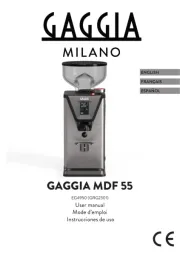
30 Juli 2025
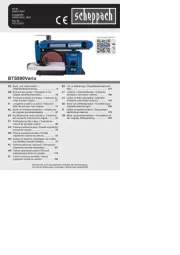
29 Juli 2025
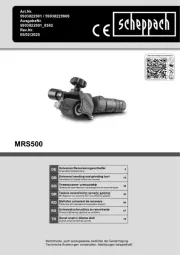
29 Juli 2025
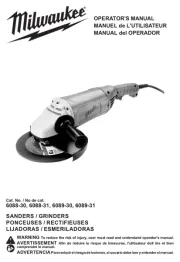
16 Juli 2025
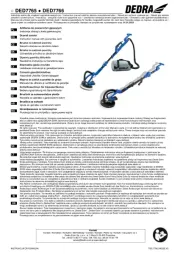
15 Juli 2025
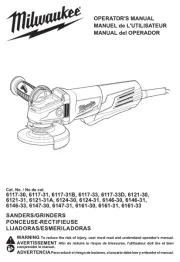
15 Juli 2025
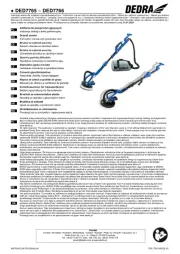
15 Juli 2025
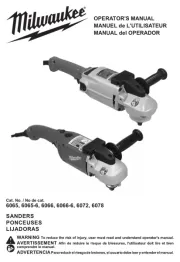
15 Juli 2025
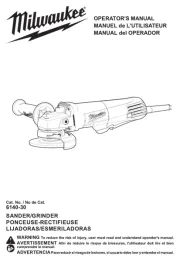
15 Juli 2025
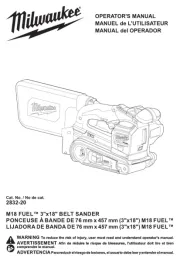
15 Juli 2025